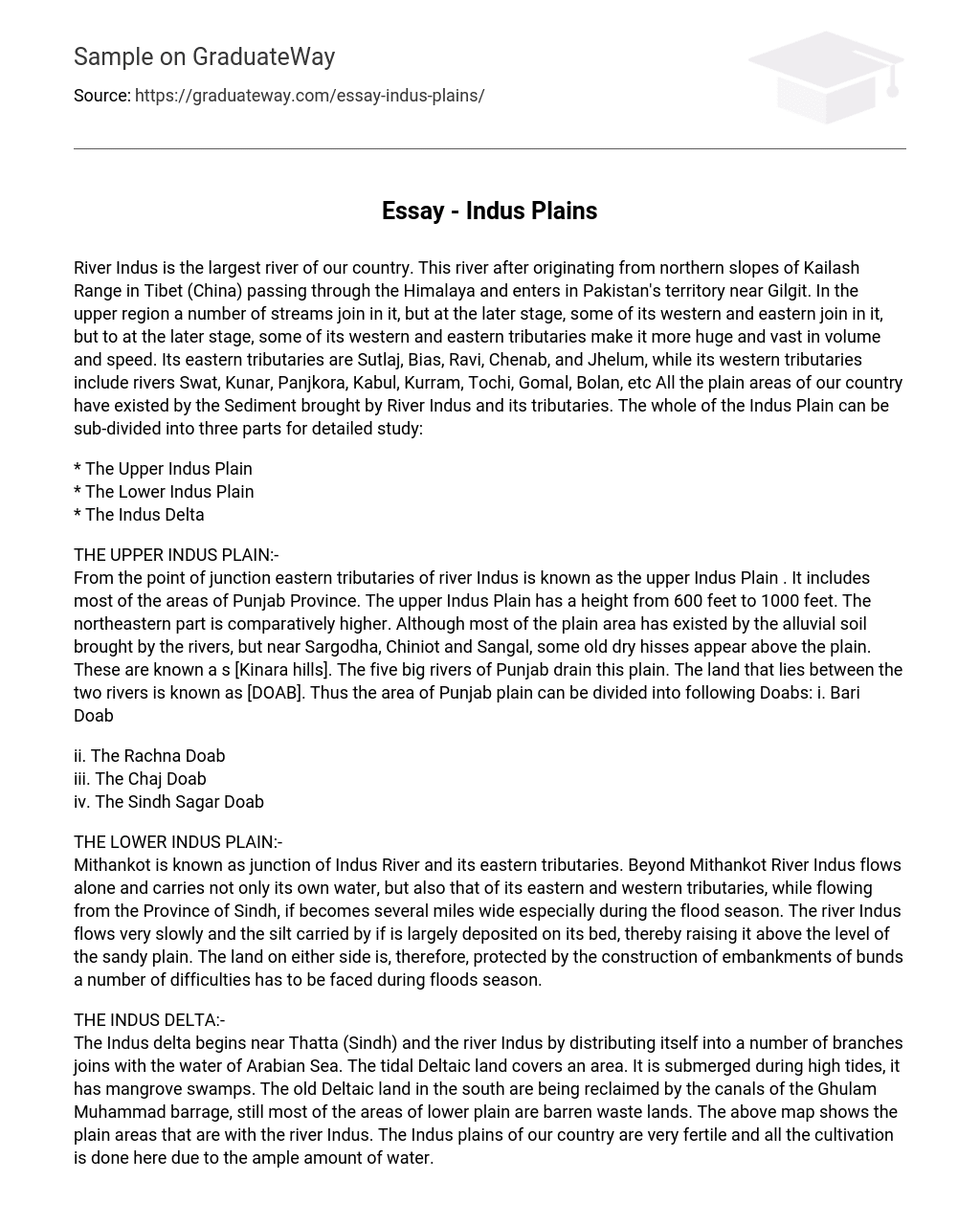The River Indus, the largest river in our country, originates from the northern slopes of the Kailash Range in Tibet (China) and passes through the Himalayas before entering Pakistan’s territory near Gilgit. In its upper region, several streams join it, while both its western and eastern tributaries contribute to its vast volume and speed at a later stage. The eastern tributaries of the Indus include Sutlaj, Bias, Ravi, Chenab, and Jhelum rivers. On the other hand, rivers such as Swat, Kunar, Panjkora, Kabul, Kurram, Tochi,Gomal,and Bolan are among its western tributaries. The sediment brought by River Indus and its tributaries has been instrumental in shaping all the plain areas of our country. For detailed study purposes,the Indus Plain can be divided into three parts.
The Upper Indus Plain, the Lower Indus Plain, and the Indus Delta
The upper Indus Plain, situated in the Punjab Province, is the convergence point for the eastern tributaries of the Indus River. Its elevation varies from 600 to 1000 feet, with higher elevations found in the northeastern part. Although most of the plain consists of alluvial soil deposited by the rivers, there are ancient dry hills called Kinara hills near Sargodha, Chiniot, and Sangal. This plain is drained by Punjab’s five major rivers, and the land between these rivers is known as DOAB. Consequently, several Doabs exist within the Punjab plain, including Bari Doab.
ii. The Rachna Doab, iii. The Chaj Doab, and iv. The Sindh Sagar Doab.
The Lower Indus Plain, known as the junction of the Indus River and its eastern tributaries, is located at Mithankot. Beyond Mithankot, the River Indus flows independently, carrying not only its own water but also that of its eastern and western tributaries. As it flows from the Province of Sindh, the river becomes several miles wide, particularly during the flood season. The flow of the Indus River is slow, resulting in the deposition of a large amount of silt on its bed, raising it above the level of the sandy plain. To protect the land on either side from flooding, embankments or bunds have been constructed. Despite these measures, numerous challenges arise during the flood season.
THE INDUS DELTA: The Indus delta originates near Thatta (Sindh) and the river Indus divides itself into several branches, merging with the Arabian Sea. This tidal Deltaic land encompasses an area that is submerged during high tides, featuring mangrove swamps. The canals of the Ghulam Muhammad barrage are reclaiming the old Deltaic land in the southern region, while the majority of the lower plains remain barren wastelands. The map above illustrates the plain areas adjacent to the river Indus. Our country’s Indus plains are highly fertile, enabling extensive cultivation due to an abundance of water.





